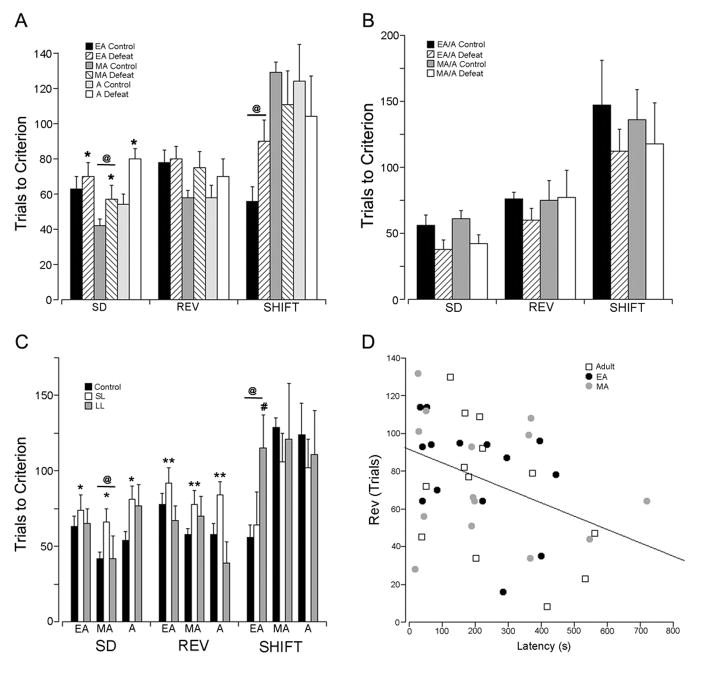Figure 1.
Effect of age, stress and coping strategy on task performance. A) Performance of rats that were exposed to repeated social stress or control manipulation and trained in the operant set shifting task during the week following the last stress/control manipulation. The abscissa indicates task stages of side discrimination (SD), reversal learning (REV) and strategy set-shifting (SHIFT). The ordinate indicates trials to reach criterion. Each bar is the mean of 19 control and 14 stressed EA rats, 18 control and 14 stressed MA rats and 14 control and 13 stressed Adult rats. Vertical lines are S.E.M. @ p<0.05, effect of age; *p<0.05, effect of stress. B) Performance of rats that were exposed to repeated social stress or control manipulation during EA or MA and trained in the operant set shifting task as adults. The abscissa and ordinate are as in A. Each bar is the mean of 7 controls and 7 stressed EA rats and 7 control and 5 stressed MA rats. There were no effects of age or stress on performance at any task stage. C) Performance of rats based on latency clusters. The abscissa and ordinate are as in A. Each bar is the mean of 19 control, 7 SL and 7 LL EA rats, 18 control, 9 SL and 5 LL MA rats and 14 control, 9 SL and 4 LL Adult rats. @ p<0.05, effect of age; *p<0.05, effect of latency cluster, **p<0.005, effect of latency cluster; # p<0.05. D) Correlation between defeat latency and trials to reach criterion in the REV task. Each point represents an individual Adult, EA or MA rat as indicated by the legend. R2=0.15, p<0.02.

